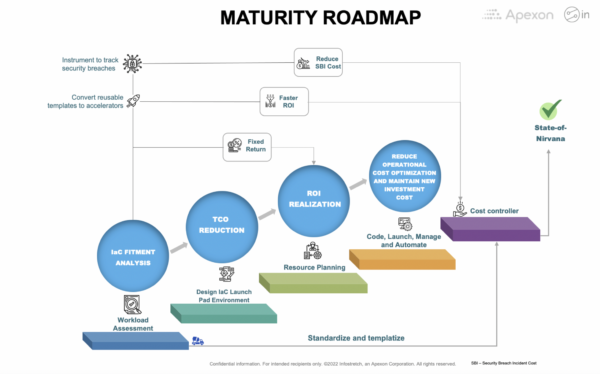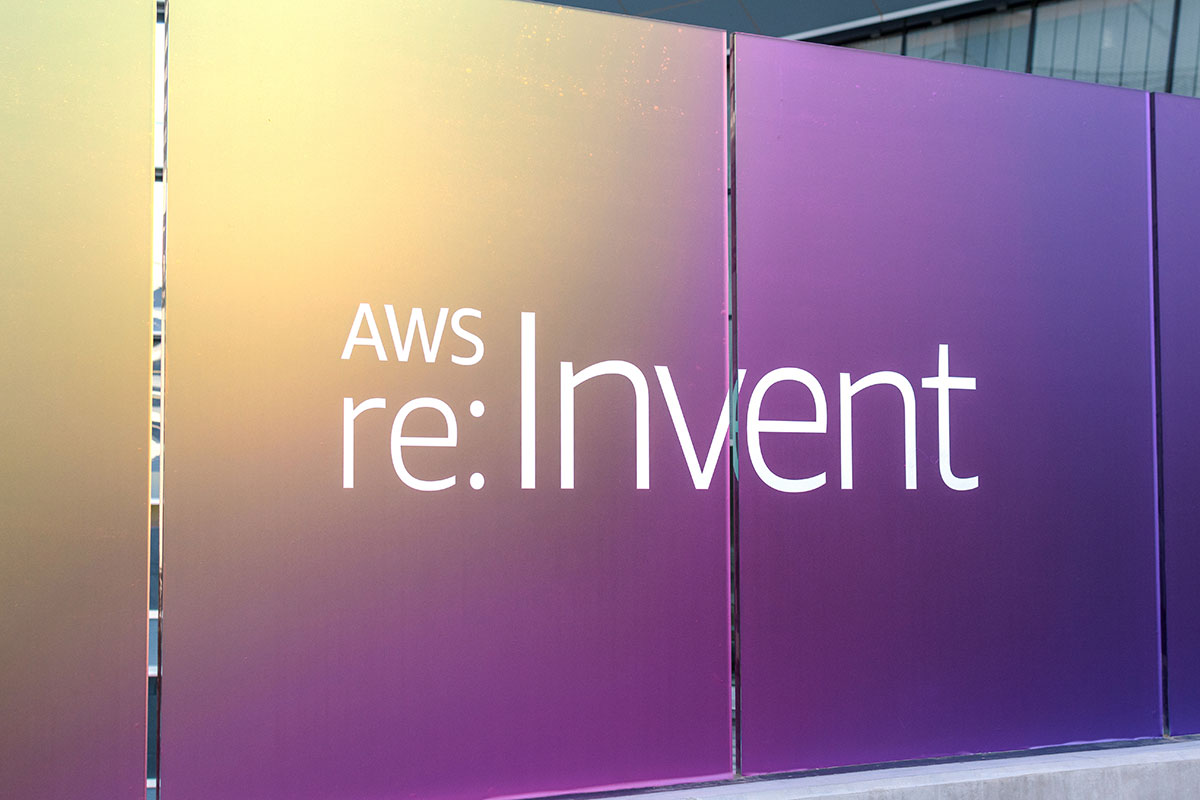
Cloud Infrastructure: IaC Maturity Roadmap for Faster ROI

As we all know, the COVID-19 pandemic has accelerated the rate of digital transformation. To stay competitive, businesses must discover new and faster ways of building their cloud infrastructure to facilitate their digital transformation journeys, engage with customers, accelerate automation, and obtain faster ROI.
Speaking of cloud infrastructure, knowing how to automate computing has become the most relevant skill right now. Having infrastructure as code (IaC) is the most desired process in this complex and fast-changing digital landscape, where the ability to deploy a sustainable and scalable stack has become the backbone to running applications at scale.
Take a distributed application that needs to be deployed multi-region, host complex application(s), serve varieties of personas across the globe, or handle new business changes daily—those physical hand-tuning servers or scripts are never going to scale. The ability to automate infrastructure provisioning becomes a core need to serve the customer faster and more efficiently. Simply put, we can’t wait a few days or even hours to deploy a “server”.
IaC manages and provisions resources through machine-readable definition files rather than time-consuming, error-prone physical hardware configuration tools. Today, infrastructure is more commonly provisioned using hand-written code or scripts. Technology moves fast, and to stay competitive in this digital world, the rate of adoption of new techniques, as well as reaching the level of maturity more quickly, has a direct influence on ROI numbers and timelines.
As shown in the diagram below, the overall IaC journey is not just about scripting and deploying coded templates into the production. It is also about assessing how much workload is required to be configured, managed, and automated. Can everything be a part of IaC? Or can some steps be manual, especially software version upgrades, security patch testing and deployment, scheduled or on-demand vulnerability testing, etc.? Performing an IaC fitment analysis is a crucial aspect of the process.

Depending on the workload you want to enable on the cloud—be it a hybrid, multi, or single cloud—resource planning is essential to address risks and dependencies between legacy applications thoroughly. With that understanding, management can allocate the budget more accurately to absorb the operational cost and provision for the contingency costs associated with ‘last minute surprises’ and even reserve some funds for continuous improvements. Every step of the process should be calibrated and optimized to reduce TCO and obtain faster ROI, reaching a “state of Nirvana” sooner with 100% visibility of resources, time, cost and confidence!
In summary, the IaC Maturity Roadmap may consist of the following high-level steps:
- Workload assessment
- Environment management
- Resource planning and scripting
- IaC enablement
- Cost controller
IaC maturity roadmap begins with the workload assessment, designing a resource management plan, and utilizing that to build an IaC launch pad environment to launch and manage resources by simply click-and-push buttons. As the number of environments, cloud resources, services, and configurations grow, this launch pad environment helps to meet the scalability requirements easily and can also be leveraged to embed additional functions such as security into the process. For example, compute instances can be hardened, regularly upgraded, and managed from a single portal before being shipped to the upstream environments using configuration management tools like Ansible or Puppet or Salt, etc. Typically, such instances stay on the developer’s machine, which is a risky proposition; therefore, having a safer cloud environment brings easy and secured feature deployments with no restrictions on geo, regions, or customer subscription levels.
Below are the top considerations when automating IaC functionality while embarking on a maturity roadmap:
Accelerators
IaC accelerators can help configure infrastructure a lot faster and reduce TCO significantly. Think about the actual cost savings when it takes minutes or hours to spin up a whole new infrastructure versus the manual effort that takes days or even weeks. On average, an accelerator can help to save up to 20-30% of cost and effort. Additionally, with the help of an IaC launchpad, one can get upfront visibility of TCO, ROI, or hidden operational costs to help manage budget, resources, assets, and environments more efficiently. It can also help to version-enabled accelerators based on new updates, tool-specific code blocks (e.g., AWS-specific service like CloudFormation or GCP or Azure, etc.), or cloud agnostic tooling like Terraform and manage parametrization configuration changes by environments.
Automation and Security
By enabling the code to manage all networking, storage, and computing services with a high degree of automation, resources can be deployed in a repeatable and predictable manner across environments. It reduces deployment and manual errors and even enforces security measures consistently.
An IaC launchpad enables documentation, logging, and recording capability of every change to the server configuration. Knowing where to look for attack vectors when a security breach occurs is beneficial. The key objective of such design practices is to significantly reduce overall security breach incident costs.
Standardization is Directly Proportional to Scalability
As we all know, operational efficiency is key to staying prepared for new, sudden business changes. Having a stable working environment is necessary to address the difference adequately. Deploying infrastructure using cloud-agnostic tools can be constructed into an error-free repeatable process, eliminating critical runtime issues caused by missing dependencies or configuration drifts. Standardizing IaC for infrastructure configuration and management can lay the foundation for a scalable environment with significantly reduced errors.
Before building the maturity roadmap, a quick assessment is essential to identify gaps between the current and future state. An early start also allows for experimentation with an array of different IaC tools, helping to make better decisions on ones that will scale best with the technology stack, portfolio, and overall business goals.
Cloud-native IaC tools such as AWS CloudFormation, Azure Resource Manager, Google Deployment Manager, and some cloud-agnostic tools like Terraform can help to build out the IaC maturity model.
Taking your business to new levels of efficiency, productivity, and customer satisfaction when starting your own IaC journey or when at a point of dealing with complex infrastructure-related challenges can take time and effort intensive. Having several years of experience in digitizing small, medium, and big businesses, Apexon can help to bring innovative ideas and implement IaC technologies for faster ROI.




